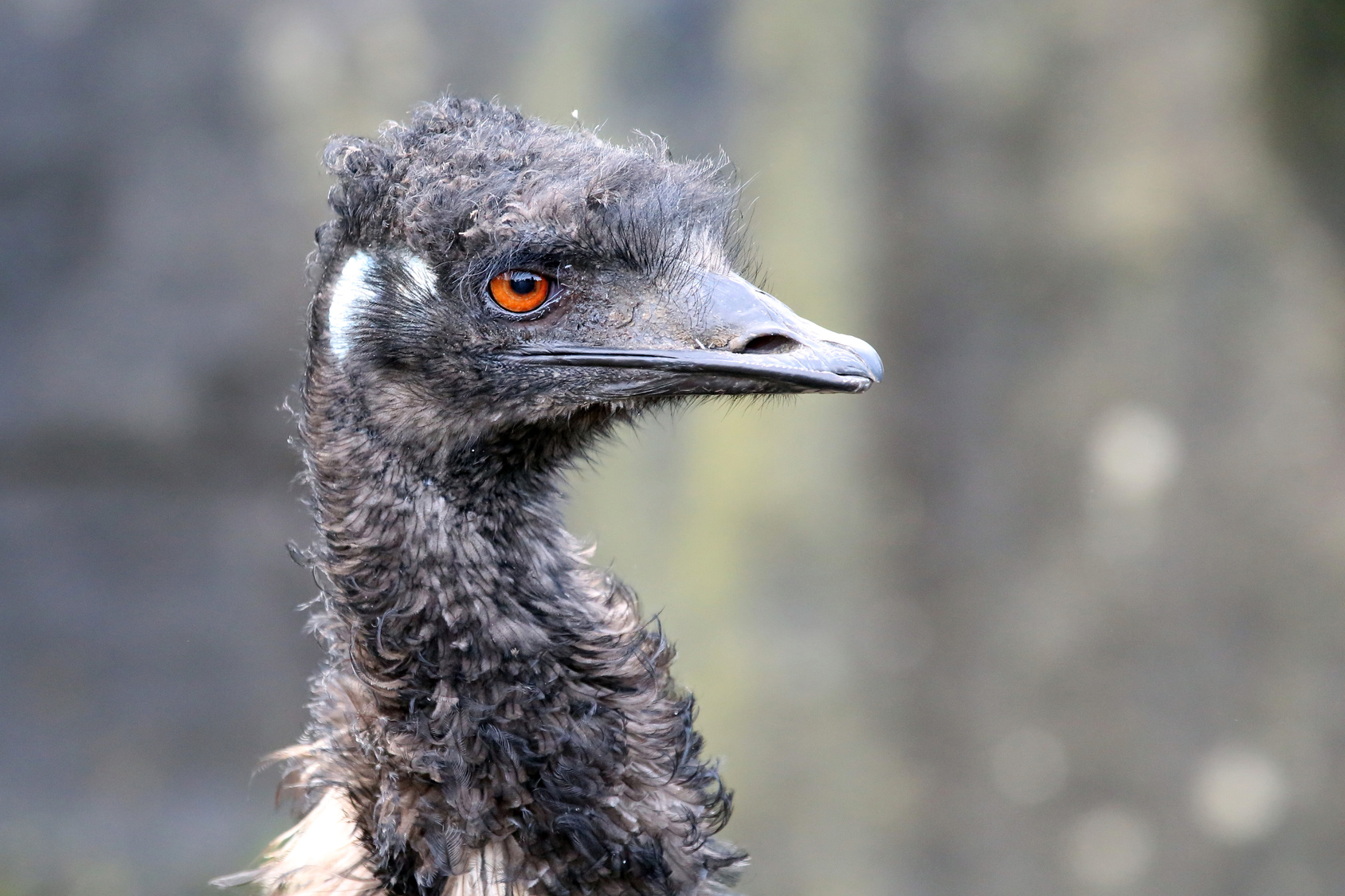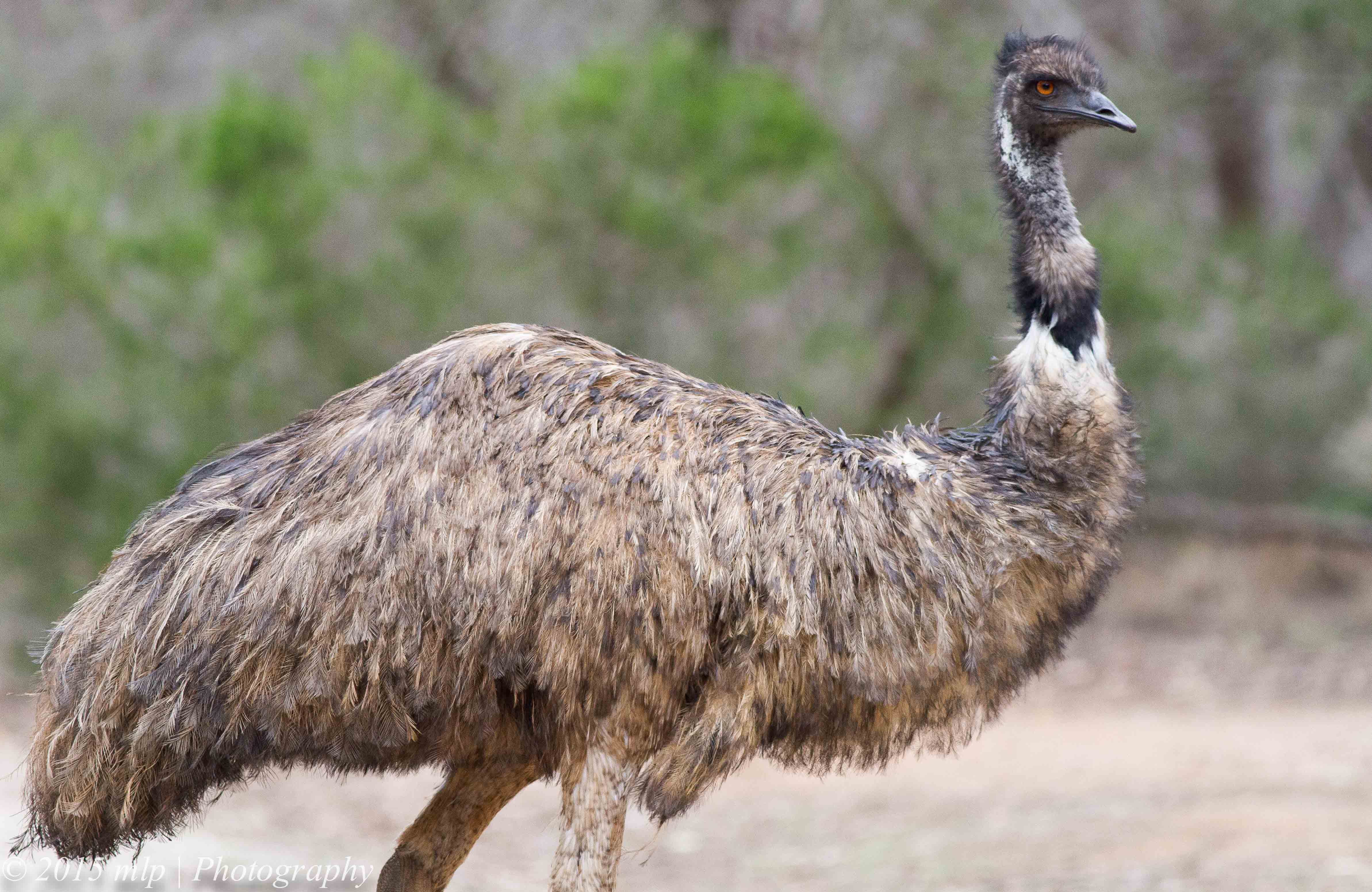Emu Production Guidelines
Guidelines for Caring for Emus

Close up of emu head, Dromaius novaehollandiae
- Provide a Balanced Diet– A variety of feed ingredients are used in proper proportions to produce the perfect diet for emus throughout their lives. Corn, barley, milo (grain sorghum), wheat and oats are among the grains used to provide the optimal levels of dietary energy. Oilseed meals, largely consisting of soybean meal, are the major source of protein, the building block of muscle and other organs. Vitamins and minerals, such as calcium and phosphorous, make up the remainder of an emus’ diet.
- Daily Monitoring– To ensure health and contentment, emus are observed daily to check the health of animals, as well as the availability of food, water and shelter, pastures and pens. Protection from predators must be provided.
- Cleaning Houses – Emu hutches and buildings require regular cleaning to prevent disease.
- Fencing & Pens – 6′ tall chain link or 2″x4″ no-climb fencing are the preferred fencing for emus. Pens that have adequate room for the emus to run are recommended.
- Chick Runs – Draft free chick runs, with heaters and/or heat lamps when needed, are provided to insure the health and comfort of emu chicks under 2 months of age.
- Handling Emus – Proper techniques (working from behind and providing adequately enclosed alleyways & runways) are to be used when handling or moving emus.
- Supplying Veterinary Care – If an emu is injured or sick, the producer will isolate it to provide one-on-one care and will often call in a veterinarian for advice.
- Monitoring Environmental Conditions – Producers are constantly monitoring conditions to ensure the safety of their animals and to comply with local and national regulations.
- Keeping Records – Records are kept by emu producers including documentation of daily events (temperature, feed consumption, eggs laid, incubating, hatching, growth rate).
- Processing – Humane slaughter practices are to be used in all slaughter facilities. In 1997 the American Emu Association (AEA) pledged humane slaughter practices with the USDA.

For Optimum Care Emu Growers Should:
- Provide necessary food, water and care to protect the health and well being of animals.
- Provide pens and housing of quality and size to keep the emus safe, while allowing them adequate exercise.
- Provide disease prevention practices to protect the health of their birds – including access to veterinary care.
- Provide facilities that allow safe, humane and efficient movement and/or restraint of emus.
- Use appropriate methods to euthanize terminally sick or injured birds and provide personnel with the training and experience needed to properly handle and care for emus.
- Make timely observations of emus to ensure basic needs are being met.
- Minimize stress when transporting emus.
- Keep updated on advancements and changes in the industry to make decisions based on sound production practices and consideration of the emus’ well being.

Emu Terminology
- Rooster – adult male emu
- Hen – adult female emu
- Chick – just hatched – 3 months
- Juvenile (a.k.a., blackhead) – 3 months – 1 year
- Yearling – 1 year – 20 months
- Coming Two – 20 months – 2 years
- Market Bird – emus being raised for processing at 14-16 months
- Breeders – mature mated birds used for egg laying
- Cull Birds – breeders that no longer meet the farm standards or are no longer needed and will be processed
- Trio’s – consists of 3 mated emus – 2 hens and 1 rooster
- Pairs – a mated hen and rooster
- Colony Pen – a group of breeder emus with 2-3 times more hens than roosters
Posted in Emu Husbandry
2 Comments
Leave a Comment

Founded in 1989, The American Emu Association is a non-profit trade association representing breeders, producers and marketers of emu meat, oil and other emu co-products. The emu industry is an alternative agricultural industry, dominated by the small farmer, who is devoted to humane and environmentally positive practices that will produce beneficial products for society. For more information about the American Emu Association (AEA) or the emu industry visit http://aea-emu.org
My emus lay only 5 to 6 eggs a season one year only four between three hens and two males a few years back i was getting 40 50 eggs several years back.. And my rheas layed no eggs last few years,, when i was getting 40 50 eggs . i need to understand this and why.. feed diet dislike of the males emus seem to be bonding well no fighting rheas same.. could it be the feed program what feed mix / blend would you recommend. what protien source i use blood meal now… i used to use fish meal i switched hoping id see the difference. what minerals… i want to feed them right… I have been using a mix that an emu grower breeder gave me ten years ago. I need guidence on feed blends vitamins (medication if needed in feed ) in all other aspects they seem to be doing great Thank you for any help you can give me . and any ideas why they may have ceased or slowed laying eggs , how do i correct this,? Thank you Rick Takacs
What about emu chicks newly hatched from the incubator. What food and water, heat do they need?